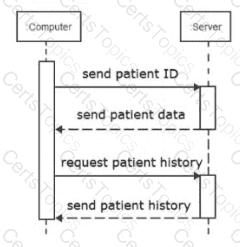Which expression evaluates to 3.7 if float x = 17.0?
It is given that integer x=41 and integer y = 16. What is the value of the expression (x % 8) - y?
Which kind of language is HTML?
A sequence diagram is shown:

What is the purpose of a sequence diagram?